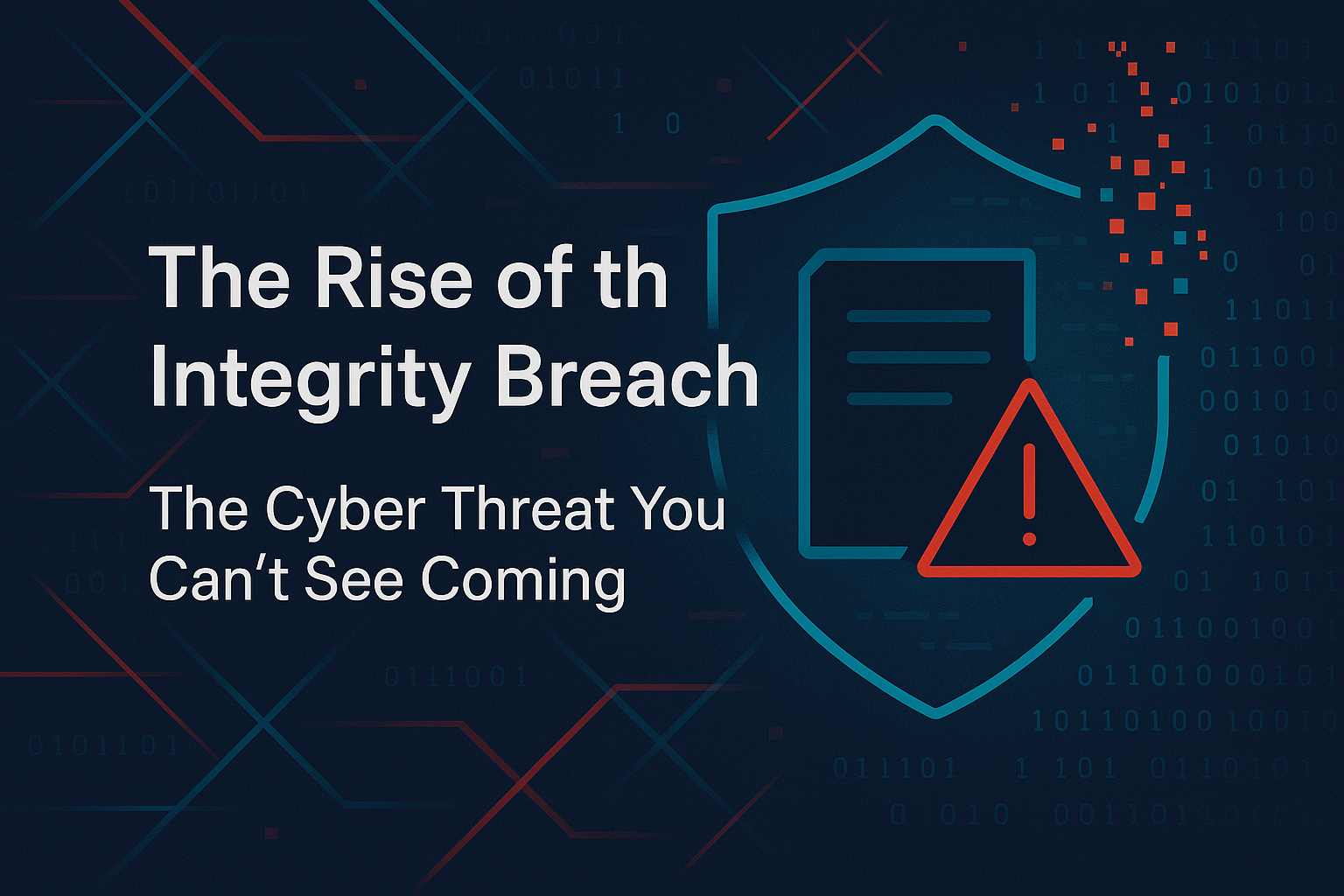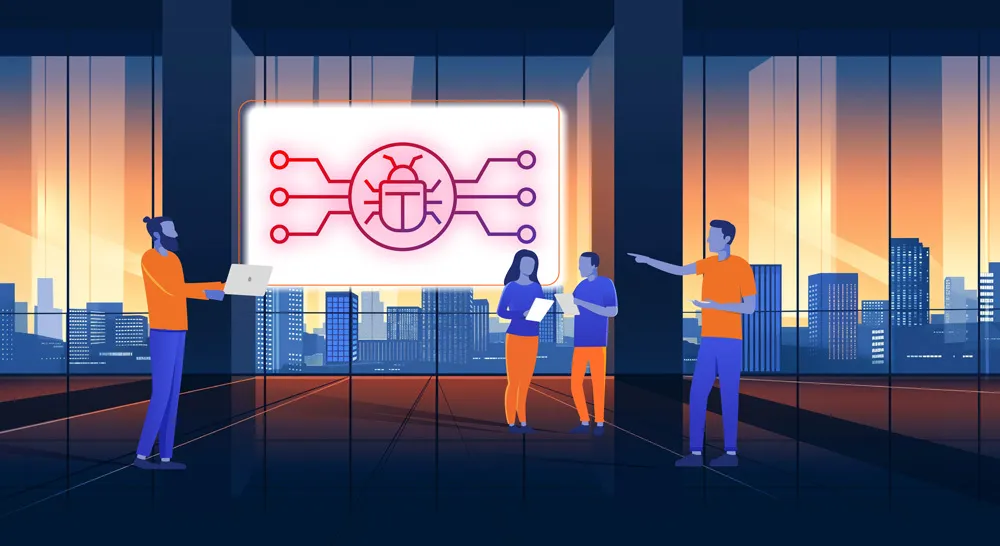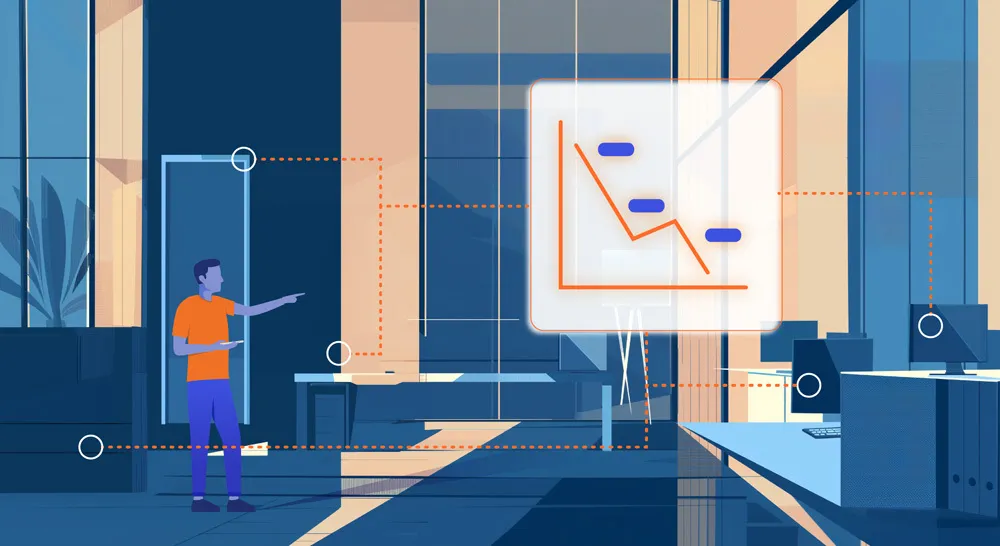
The Cyber Threat You Can’t See Coming
Most cybersecurity conversations focus on two core risks: keeping data confidential and keeping systems available. In other words, preventing data theft and ransomware attacks.
But there’s a third, less discussed pillar of cybersecurity that’s rapidly becoming the next major threat: integrity.
Integrity breaches don’t involve stealing data or locking systems. Instead, they involve subtle, deliberate changes made by a threat actor inside your environment, changes that may go unnoticed for weeks or even months.
What if someone altered financial records, tampered with timestamps, or modified formulas in your core systems, and you didn’t know? Worse, what if they told you they had, and challenged you to find every modification?
This isn’t science fiction. It’s already happening. And for organizations that rely on accurate, trustworthy data, this kind of breach can be more damaging than a traditional ransomware attack.
What is an Integrity Breach?
An integrity breach is when someone gains access to your systems and quietly changes data or system behavior without alerting your defenses. Nothing is encrypted. Nothing is stolen. But the accuracy of your information has been compromised – and that’s a problem.
The damage can be incredibly difficult to measure. If threat actors live in your systems for weeks, making small but impactful changes, it may take months of forensic review to understand the full scope.
Why This Matters More Than Ever
These attacks are especially dangerous because they’re hard to detect, harder to investigate, and hardest to recover from. Here’s why:
- They don’t trigger typical alerts or monitoring tools
- They create widespread doubt about data accuracy
- They can undermine audits, financial statements, and reporting
- They often require manual, expert-level validation to investigate
- They create operational, legal, and reputational risks without the obvious signs of a breach
You may be able to restore a system or recover a stolen file. But can you trace every data point that was quietly altered? Can you trust your reports, your financials, your compliance submissions?
Who’s at Risk?
Any organization with complex data environments, legacy systems, or proprietary algorithms is at risk. But the following sectors are especially exposed:
- Financial services
- Critical infrastructure and utilities
- Healthcare and life sciences
- Government and defense
- Organizations preparing for IPOs, audits, or acquisitions
If your business depends on data accuracy, and most do, you should be considering how to defend against integrity attacks.
A Real-World Scenario
Picture this: A threat actor spends six weeks inside your finance system, undetected. Over that time, they alter valuation formulas, insert rounding errors, and manipulate timestamps. Reports continue to run, and decisions continue to be made.
Then they contact you and say:
“We’ve changed critical values across your financial platform. Pay us, or try to find every change we made.”
Now you’re facing a dilemma: You don’t know what’s been changed, you can’t trust your systems, and your operations are potentially compromised.
Even with backups, restoring your systems doesn’t solve the problem. You still don’t know which version of the data was accurate, or when the first alteration occurred.
How to Prepare for Integrity Breaches
You can’t prevent every breach, but you can build resilience. Here’s how to start preparing for integrity threats:
- Map your critical data assets and understand how they flow across systems
- Identify your most sensitive systems and ensure they have integrity validation in place
- Use immutable logs and frequent snapshots for key databases and applications
- Incorporate forensic readiness into your cybersecurity strategy
- Practice response scenarios where system integrity is in question, tabletop exercises can help expose blind spots
- Partner with firms that specialize in digital forensics and recovery, not just detection and prevention
Why Integrity Matters for Cyber Resilience
Recovering from a traditional ransomware attack often involves restoring from backups and tightening defenses. Recovering from an integrity breach is far more complex. It requires tracing changes, rebuilding trust in your data, and, in some cases, recreating entire systems from scratch.
That’s why integrity is quickly becoming the next frontier of cybersecurity. It’s not just about keeping attackers out – it’s about ensuring that your data, your systems, and your decisions are based on truth.
Where CYPFER Comes In
At CYPFER, we’ve responded to thousands of complex incidents across the globe, including cases where system integrity was compromised. We specialize in recovery-focused incident response, helping organizations investigate, validate, and rebuild with confidence.
We work 24/7, go onsite when needed, and never outsource. Because in moments like these, speed, expertise, and trust matter most.
Cyber Certainty™ means knowing your systems are secure, and that your data is real. If you’re thinking about how to protect the integrity of your environment, we’re here to help.
Your Complete Cyber Security Partner:
Every Step, Every Threat.
At CYPFER, we don’t just protect your business—we become part of it.
As an extension of your team, our sole focus is on cyber security, ensuring your peace of mind. From incident response and ransomware recovery to digital forensics and cyber risk, we integrate seamlessly with your operations. We’re with you 24×7, ready to tackle threats head-on and prevent future ones.
Choose CYPFER, and experience unmatched dedication and expertise. Trust us to keep your business secure and resilient at every turn.

Get Cyber Certainty™ Today
We’re here to keep the heartbeat of your business running, safe from the threat of cyber attacks. Wherever and whatever your circumstances.
Contact CYPFER





